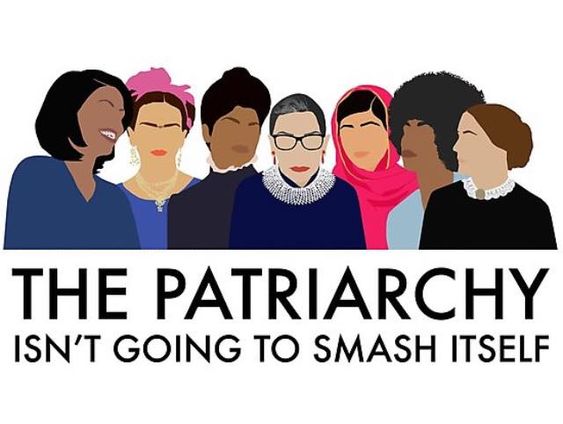Read the first part of this series here
In African societies, women stayed home in periods of war because of childbearing to look after the homes while the men were gone. An existential threat to the men became apparent—how were they to ensure the faithfulness of their women in their absence? This resulted in the engineering of a system to block their sexual arousal, the removal of the clitoris—(a small, sensitive and erectile part of the female genitals), was designed and put in place as a long-term remedy. This hampered the female sexual desires and took away most part of her sexual sensations. As experiences have shown, women with their clitoris removed barely have the sexual instincts compared to those untouched, and they experience a painful sexual life. The birth of this practice reduced women to sex objects for men and ripped away their sexual inclinations while making them more prone to diseases and painful menstruation. This barbarity, which happens even in today’s civilization, stands as one of the greatest crimes by men against women and has been normalized and accepted as a practice in most cultures. It contributed to the social conditioning of the feminine characteristics and forms part of the basis on which our definition of the woman today is predicated.
From a materialist lens of history, transcending the natural constraints of human existence for survival depended on physical force in medieval periods. The most powerful managed to amass and concentrate wealth within their social level at the expense of other sections of society, especially women who were considered weak. Little girls in China suffered the consequence the most as they were left to die while women were banned from production. Pre-Islamic Arabia was a bastion of female infantile (the deliberate killing of baby girls) as they were not considered suitable for carrying the legacy of the family.
In traditional African societies, there exists strong respect for ancestry but those ancestors are seen through a masculine lens. African professing ancestry is probably referring to his great-grandfather or some old man who died hundreds of years ago. With the control of the family in the hands of men, becoming an immortal was based on the family left behind, and the African concept of immortality and ancestry is unconsciously driven toward fatherhood. Africa’s duo fertility in medieval periods was a hallmark of the continent’s values that most scholars celebrate, especially the Tiffs of Nigeria that portrays the woman as “a symbol of two fertilities”, where she’s hailed as bearing children and producing the land as taught by Mazrui.
In Mazrui words, “the womb and the soil together produce the next generation of society”. In its own defence, this system was considered to be hugely respectful of women and their dignity. Even Mazrui frowns on the abolition of Africa’s duo fertility by colonialism which extracted women from the soil and transported them to mere clerks and office workers. In its limitations, it positioned women to a level that barred them from pursuing positions of leadership and major decision making, except for working on the soil and procreating. It was based on a massive concentration of power in the hands of men that led to the cultural and social delineation of women from rising to the hierarchy of most African societies. Sexual inequality ensued as a result of these historical processes and men in most civilizations felt entitled to the female body.
This too is in no innocence of religion as most of what is wrong with our cultures today comes from a religious concept that made the first woman the perpetrator of the first sin. In Mazrui’s triple heritage, it’s apparent that “one impediment to sexual inequality is religion. Traditional Africa, for instance, abounds with images of women as weak, tempting and irrelevant. Islam portrays the first woman, Eve, negatively in its own version of the development of the human race. And Some versions of Christianity trace the original sin to Eve and the serpent who was sentenced by God to undergo the pain of childbirth”.
What Mazrui reveals is the fact that it’s clear, of course, that we’ve learned to respect the woman as a sister, mother, and daughter, but it’s not clear if we respect her as a human being.
These, by design not accident, are byproducts of the psychological upbringing of children from birth to adulthood. The life instincts created for baby girls while growing up contributes to this systematic programming and the social exclusion of women. Before attainment of consciousness, as we have learned from the French existentialist philosopher and feminist theorist Simone de Beauvoir, the difference in the handling of children draws a dichotomy in their social difference. The problem is not that the natural difference between the sexes is bad, but the instincts that are curated as social characteristics of women make her an object, instead of being a subject with her own autonomy from a feminist perspective.
On this ground, any step toward women empowerment and the successes of feminist movements would remain flawed without a dismantling of the popular conceptions of femininity and true assertion of the female autonomy as opposed to the life instincts created by men through psychological and social evolution from childhood. Fostering radical reconstruction of society must start with deconstructing the current social orders and the framework in which they are manifested for they are exploitative in the context of women liberation. In essence, what this seeks to do is to undermine the historical developments that socially conditioned women with new social norms of equality. Even as of now, the idea of who a woman remains a contested historical and philosophical debate to which there has been no convergence. Most feminist philosophers, including Simone de Beauvoir, has argued, that the biological sex of a woman as discrete from men remain an established phenomenon, but its social characteristics in the context of gender are what has been contested as a by-product of history and the fragmentation of society built on the subjugation of the woman. To unpack this is to first make clear that the sexes as male and female are not under question as a social construct, but rather the concept of gender and its roles, which derives from culture and history; and there can be no better legitimacy of this than Simone’s epitaph “one is not born, but becomes a woman”. Though this issue is too sensitive and a hard to explore topic, the main point of contention here is the social differences established as a result of psychology and history.
The successes of feminist movements and empowerment programs for women in this decade or next must first start with this grassroots education of addressing these misconceptions. Women cannot rely on men for this social awakening; they must lead their own struggle, establish their own social and radical institutions and all this can start with a reorientation and education program for women. The myths of womanhood and its shackles must be debunked for this would mean the declaration of female independence, a firm step in the direction of equality, and the disbandment of the weakness that has been attached to her throughout history.
Authored by Ansumana Konneh
Featured picture by Anita Stuever

